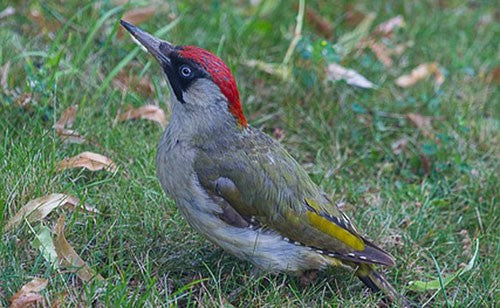
Green Woodpecker: Identification, Habitat, and Feeding Tips
Share
The Green Woodpecker (Picus viridis) is a member of the woodpecker family (Picidae). It is one of three types of woodpecker and is the largest. The crown and nape are crimson, the mantle and wings are green, with a yellowish rump and whitish underparts, the tail and bill are blackish and there is black marking around its white eye.
It is usually a shy bird but can draw attention with their loud call that can be heard as a far-carrying laugh or "yaffle".
If you are lucky enough to see a Green Woodpecker in your garden, it’s most likely that you’ll see them on the lawn searching for ants, leatherjackets and earthworms. They’re less common in the north of England and absent from much of Scotland and all of Ireland.
Like other woodpeckers, they use their stiff tail feather as a prop when clinging to a tree; their feet are specially arranged with two pointing forwards and two backwards.
They are a woodland bird and extract insects from crevices in trees with their long sticky tongue. It is unlike the Great Spotted Woodpecker as it can rarely be heard drumming its beak against hollow wood.
If you’re looking to provide a high-energy food source for Green Woodpeckers, Haith’s supply a great selection of suets and our suet puds are blended with seeds you can see to create a rich and plumptious fat ball. Additionally, you could scatter Golden Chorus on the ground as it contains soft foods and fruits.
Also Live mealworms are rich in (48%) protein and (40%) fat; they are vegetarian larvae and are clean and odourless. Using live mealworms to attract more birds is generally a successful strategy, because as the birds flutter around the garden the movement of the mealworms is more likely to catch their attention. Mealworms are relished by many species of bird and can be fed from a ground feeder or bird table. For the squeamish, there are dried mealworms.
You can always rely on Haith’s Super-clean quality foods to help wildlife survive and thrive as winter cautiously gives way to spring.

Written by Tina Jakes
